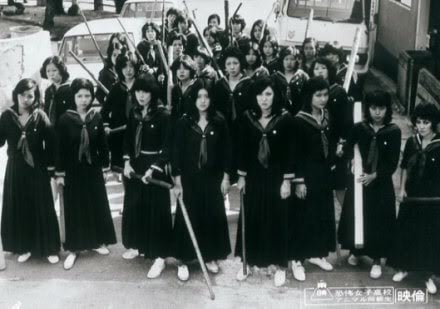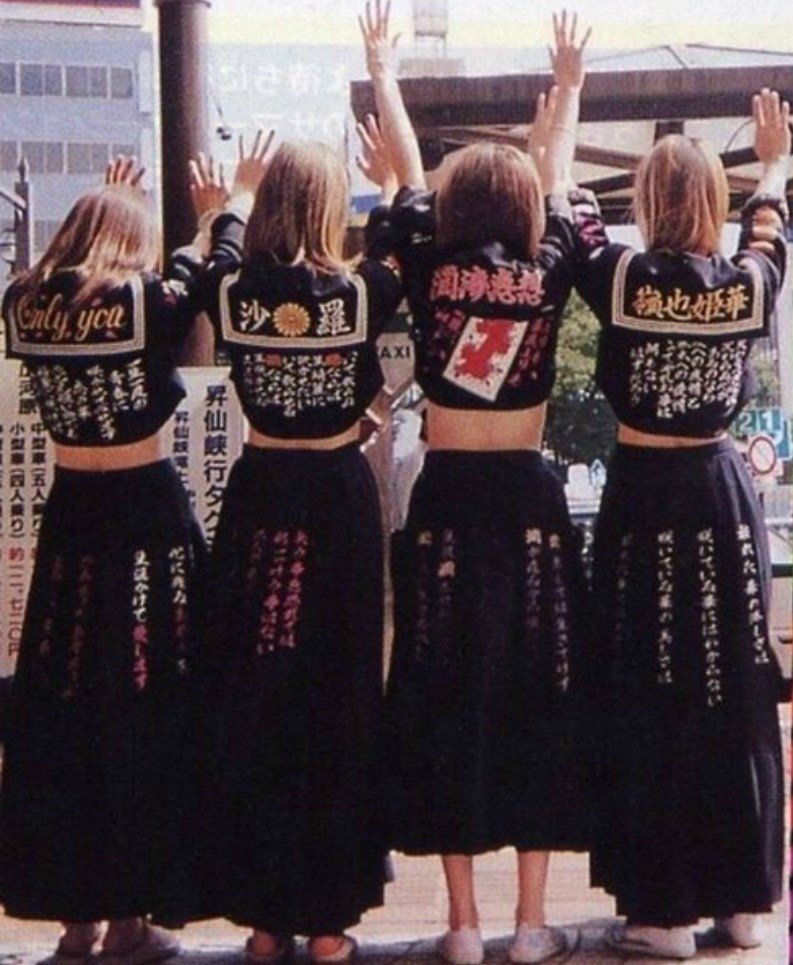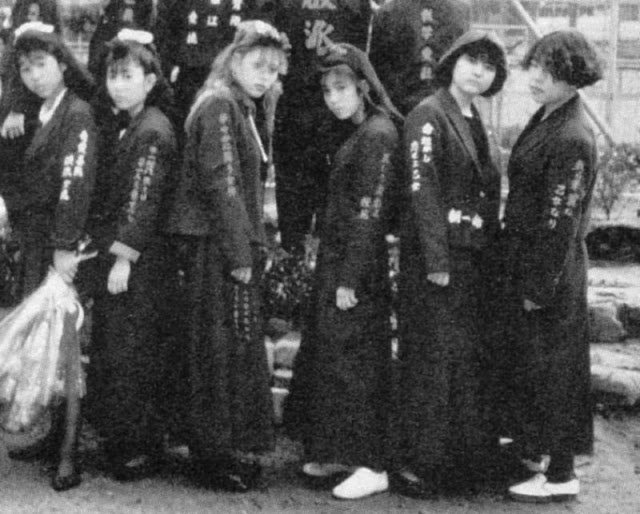SUKEBAN: delinquent girls
Sukeban (スケバン) is a term that is often translated as "delinquent girl.” The term entered the mainstream from 1972 when it became a common way to refer either to the leader of a girl gang or the general members.
Generally still of school age, sukeban could be identified by their brightly died hair, surgical masks and modified school uniforms. They would roll up sleeves, crop their shirts and wear long skirts as a rejection of the popular mini-skirt. They would also carry razor blades, bamboo swords or chains that would be concealed beneath their skirts.
a typical sukeban outfit
Sukeban are the female equivalent to the male banchō in Japanese culture. In fact, these all girl groups started to appear in the 1960’s as a direct result of banchō refusal to accept female members. Throughout the 70’s, they often became a feminist antihero that brought feminism more directly into the public consciousness.
Sukeban initially started small with petty acts of delinquency such as smoking in school bathrooms. However, the severity of their crimes and their numbers rapidly grew until organisations such as the Kanto Women Delinquent Alliance had 20,000 members involved in frequent acts of violence, substance abuse and shoplifting.
Like many gangs, the sukeban organisations followed strict rules of hierarchy and punishment. Cigarette burns were a common method of punishment for girls who had broken one of the gang’s commandments.
While nowadays largely dead as a subculture, sukeban had an overwhelming cultural impact. Throughout the 70s and 80s, a wide range of manga and pink films were based on the sukeban aesthetic. It wasn’t only Japan that felt their cultural impact however. Famously, Quentin Tarantino’s Go Go Yubari character (portrayed by Chiaki Kuriyama) in Kill Bill was an interpretation of a sukeban.
Unfortunately, nowadays the closest thing you’ll see to a real Sukeban is someone in Shibuya sporting a Donki Hote costume on Halloween.





